Yangon, the former capital city of Myanmar, is the main gateway for travellers to the country. Although Nay Pyi Taw is now an official capital city of Myanmar, Yangon is still the major economic centre of Myanmar, and the city continues to lure visitors who want to get the Myanmar experience. Going to Shwedagon Pagoda, riding the Yangon Circular Train, and eating the local dish “Mohinga” are just a few examples of the things you should do when you visit Yangon.
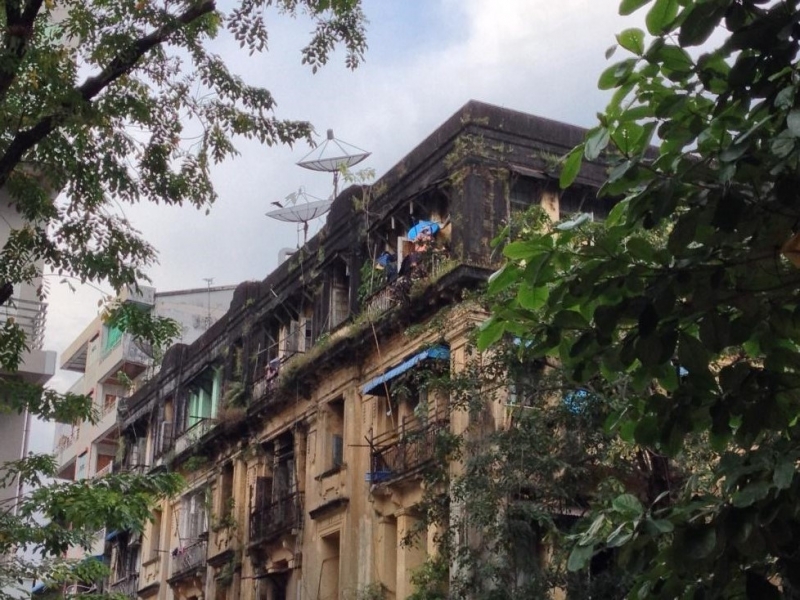
Downtown Yangon | Image credit: William
Yangon offers wide varieties of options for travellers. History lovers will be amazed at colonial buildings in Pansodan Street. A foodie will definitely savour every bite of crunchy peas and tea-leaf salad named “Laphat Thote.” Regardless of your preference while travelling, you can easily fall in love with Yangon where there are so many different places you can hang out in this 598 square kilometre city.
Also read: 25 Things to Do in Yangon on Your First Trip
Below is the thorough itinerary for you to enjoy your 3D2N stay while you are in Yangon.
Transport and Accommodation
The most convenient way to get into Myanmar is by air travel. Singapore and Thailand are the most common countries from which visitors usually get into Yangon. Although some visitors come into Myanmar by passing through border areas of Thailand and China, travelling by land can be quite taxing and may wear you out before you even begin your adventure in Yangon. So, I recommend you go by plane instead.
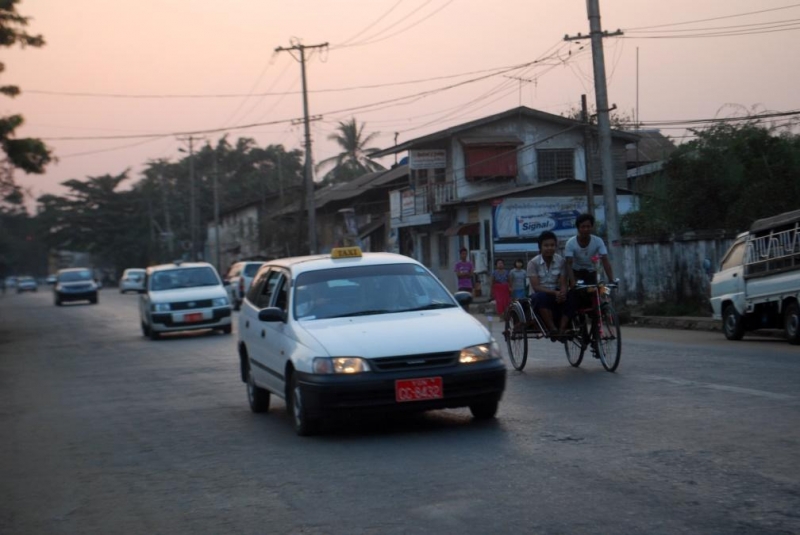
Taxis in Yangon | Image credit: InSTEDD
While you are in Yangon, I suggest you rent a car to go around the city. The public transportation system isn’t very organized. You can see buses overcrowded with people during the office hours and Myanmar government is still finding the best solution for providing better transportation system for the public. It costs you only around $50–60 to rent a car good for up to four people for a full day. If you do not want to rent a car, you can also hop aboard a taxi to go from place to place in Yangon as the taxi fare in the city is quite affordable. Oway Ride is a local taxi transportation service provider in Myanmar, and this is just another option for you.
Uber and Grab just entered the Myanmar market in early 2017, so you can also book a ride to make your way around town. The other cheaper option is to flag down a taxi and negotiate day rates with the driver. Whichever mode of transportation you choose, bargain for half the price of the initial quoted rate, because the local transportation fares aren’t standardized yet.
As for the accommodation, I recommend you stay either in Chinatown or in the Sule areas. Both of these places are located in downtown Yangon, and there are many hostels mushrooming around those areas. Thanks to the tough competition, hostels are improving and prices can go down to as little as $7–10. For luxury travellers who prefer to stay in the prime properties of Yangon, Shangri-La hotel on Sule Pagoda road is the most popular option among visitors. Since 2016, more foreign investments have come into Myanmar, and visitors now have more choices, such as Novotel, Melia, and Lotte, for their stays in Yangon.
Now, it’s time for the fun part: how to enjoy your 3D2N stay in Yangon and all the must-see places in this beautiful city. Enjoy.
Day 1: Downtown Yangon
A visit to the downtown area of Yangon is a must. Walking around Sule Pagoda, you get to experience the busy life of the Yangon people, as this is the major business district in Myanmar. From the heart of Downtown Yangon, the night scenes are exquisite. From this vantage point, you get to see three religious buildings flanked next to one another, all wonderfully illuminated at night.
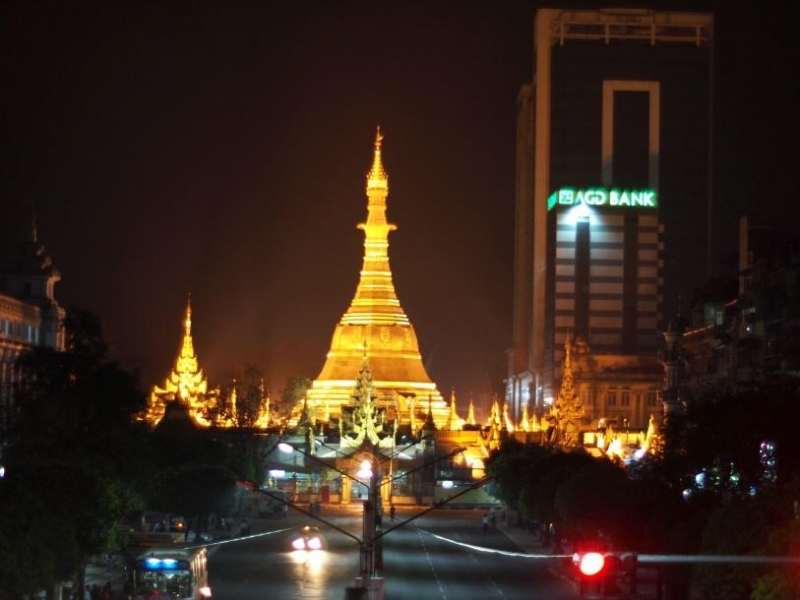
Sule Pagoda | Image credit: William
Sule Pagoda is flanked by the Immanuel Baptist Church and the Bengali Sunni Jameh Mosque. As you climb up the stairs of Sule Pagoda, you can enjoy the view from the top and see Yangon in a different light. You can walk around the pagoda grounds and be in awe of this golden stupa that was built more than 2,500 years ago. I suggest visiting the front area of City Hall to take some photos of this historical building, and afterwards, proceed to Maha Bandoola Park. There is an independence monument located in the centre of the park, and you can feel like a local and just lounge around the park grounds.
If there is an international football tournament happening during the time of your visit, you can see the big projector screen next to the park where locals volt in to support the Myanmar football team. Football is the most popular sport in Myanmar, and you can interact with local people when there is such an event.
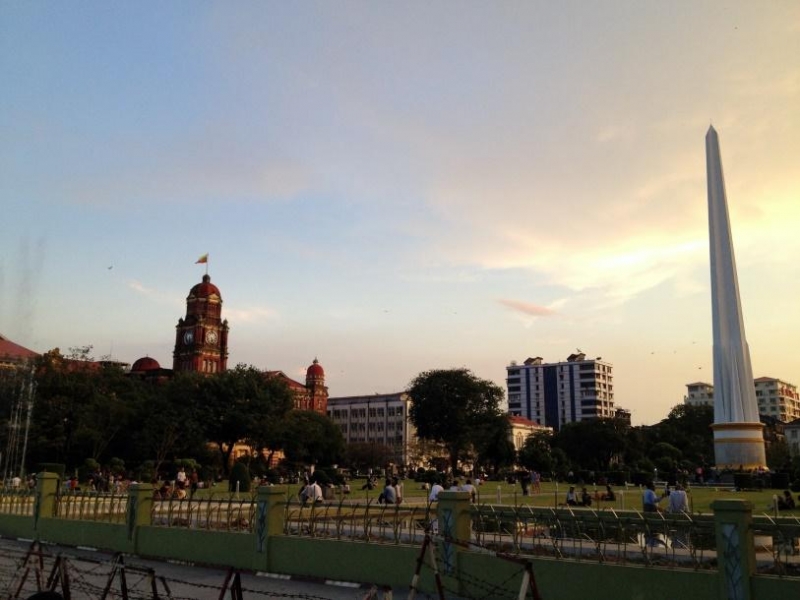
Maha Bandoola Park | Image credit: Tee La Rosa
The next stop after visiting Maha Bandoola Park would have to be Rangoon Tea House restaurant in Pansodan Street where you can enjoy a sumptuous lunch. Laphet Thote is the signature Burmese dish to try. It is prepared by mixing crunchy beans, sesame, and tea leaves altogether in one plate. You can also order a meat curry to reward your tummy after the long hours of walking. Then, cap off your lunch with a sip of Burmese local tea. Local tea is a must-try while you are in Yangon. You can choose among 16 flavour options, depending on your preferred level of sweetness in your tea.
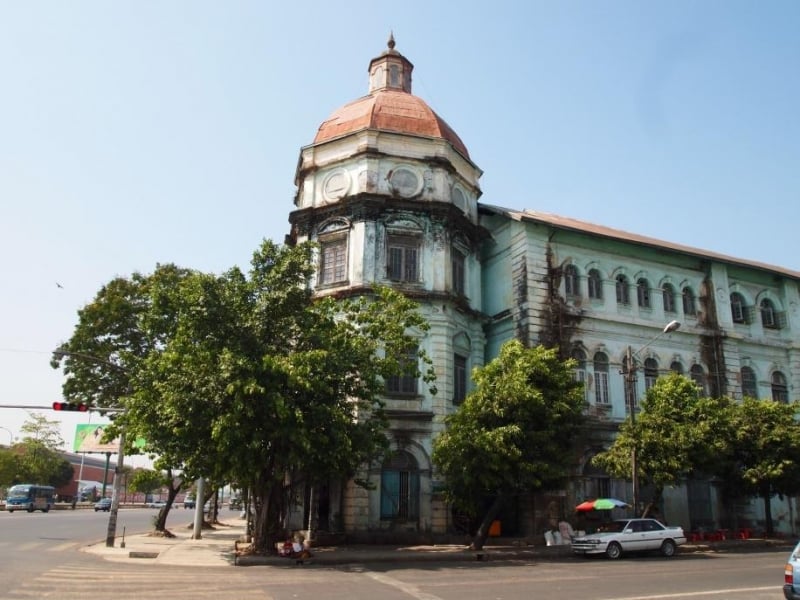
Colonial building in Pansodan Street | Image credit: William
After savouring a delicious Burmese lunch, you can enjoy a leisurely stroll along Pansodan Street. Many colonial buildings, such as Myanmar Port Authority Building, Telegraph Office, and Rangoon High Court Building, are all located on Pansodan Street. From there, turn into Strand Road, where there are other historical buildings, such as Custom House, Strand Hotel, and Bombay-Burmah Trading Corporation. If you’d like to get more in-depth stories about these colonial buildings, you can join Yangon Heritage Trust Walking Tour for $30 per person.
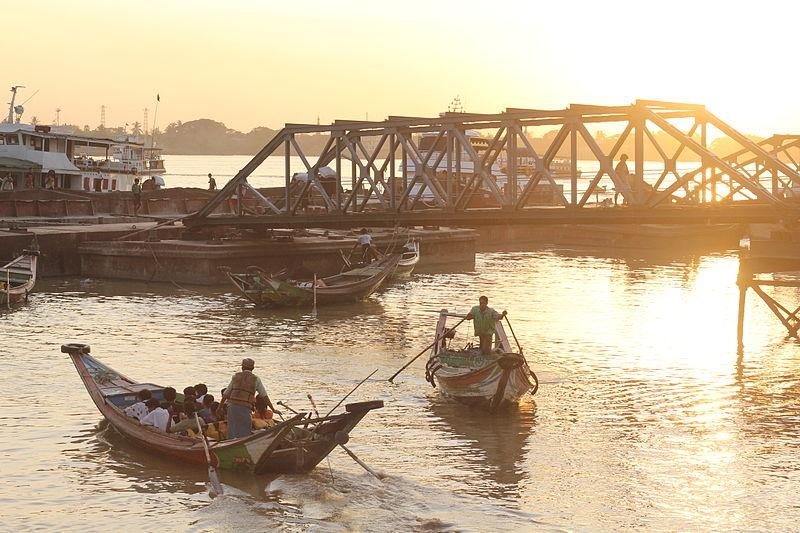
Botahtaung Harbor | Image credit: Maung Maung San
Botahtaung Harbour is the next destination to visit. You can get there via taxi for only 1,000 Kyats (less than $1) from Pansodan Street areas. There, sit on a bench and see the labour workers toil away at the harbour. You can also get great photos of sunset from here, too. If you arrive at the harbour earlier, you can pay a visit to Botahtaung Pagoda which right next to the harbour. You can get lost in the golden maze of Botahtaung pagoda and see thousands of Buddha images adorning the pagoda grounds.
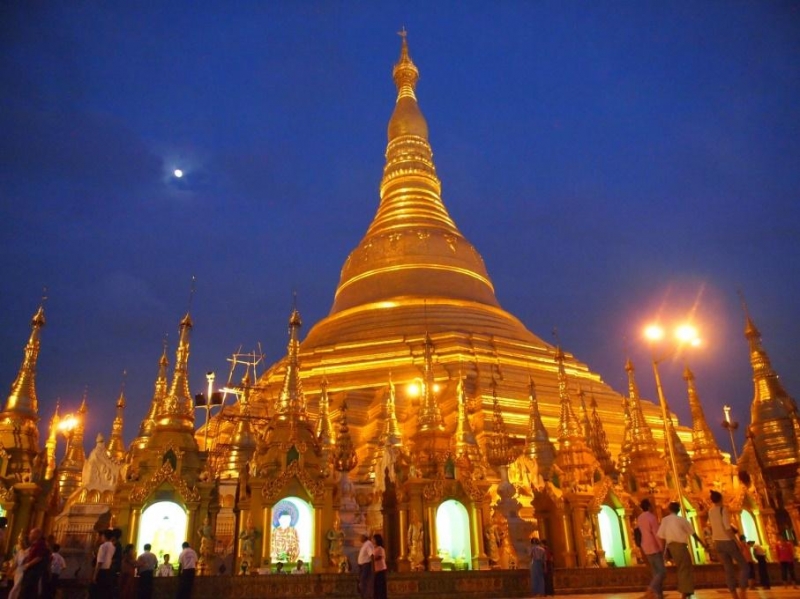
Shwedagon Pagoda | Image credit: Paul Arps
End your first day in Yangon in the most fantastic way by visiting Shwedagon Pagoda, the ultimate landmark of Yangon. There is a mandatory $8 entrance fee for foreigners but that little amount of money for such a splendid pagoda is definitely worth it. This 105-metre golden pagoda is said to contain relics of Lord Buddha, and the Burmese people consider the Shwedagon Pagoda the most sacred pagoda of all in Yangon. No words can describe the grandeur and magnificence of Shwedagon Pagoda. So, just go and see it by yourself.
Finish off your day with dinner of Kyay Oh. Kyay-Oh is a very popular noodle soup dish that is primarily served with a meat of your choice, primarily chicken or pork and vegetables. If you’re not in the mood for soup, you can try the dry Kyay Oh.
Day 2: Activities + Cathedral + Pagoda
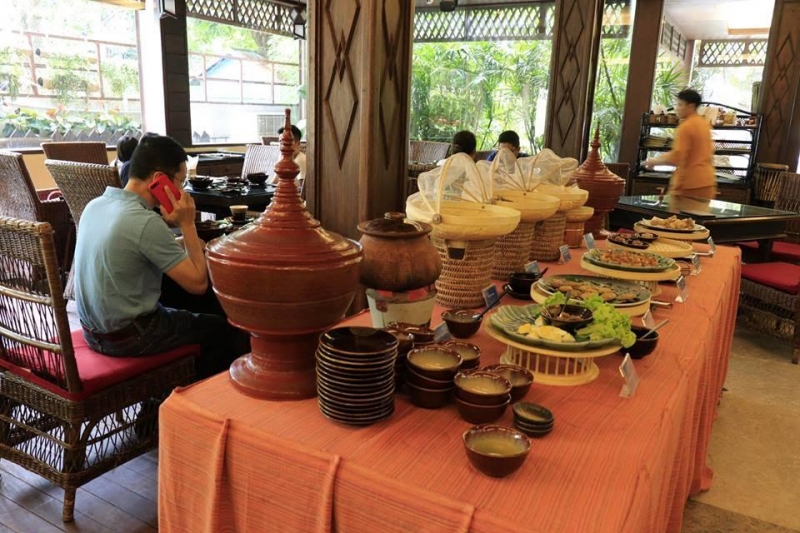
Shan Yoe Yar breakfast buffet
There is no better way to begin your day than having buffet breakfast at Shan Yoe Yar restaurant in Wartan Street. You can have one main dish (either noodle or rice of your choice) with unlimited access to fries and salads. It is also very cheap at a price of only 5,000 Kyats (approximately $4) and it is definitely worth it.
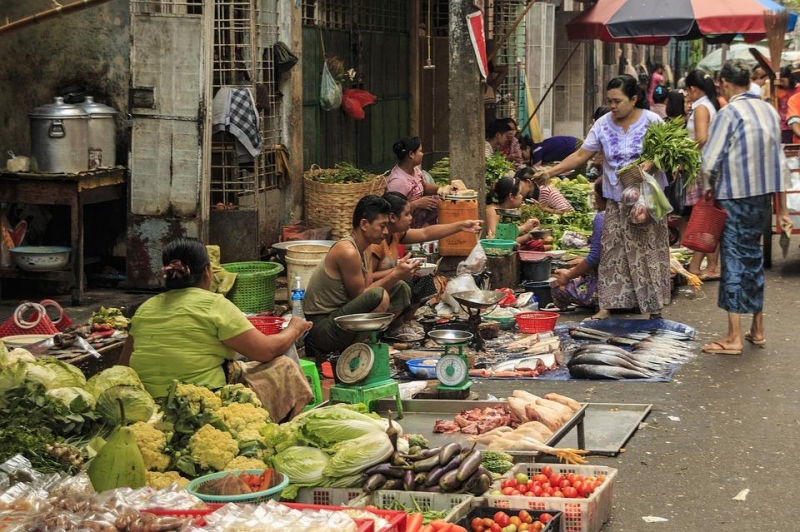
Local Wet Market | Image credit: Skybluesrich
After you fill your stomach, you can explore Wet Market in the downtown area of Yangon. Immerse yourself in the big crowd of local people and you can see people preparing “Naan” (bread) in hot stoves, frying fishcakes, and selling different kinds of meats and vegetable as you stroll across 17th and 18th street.
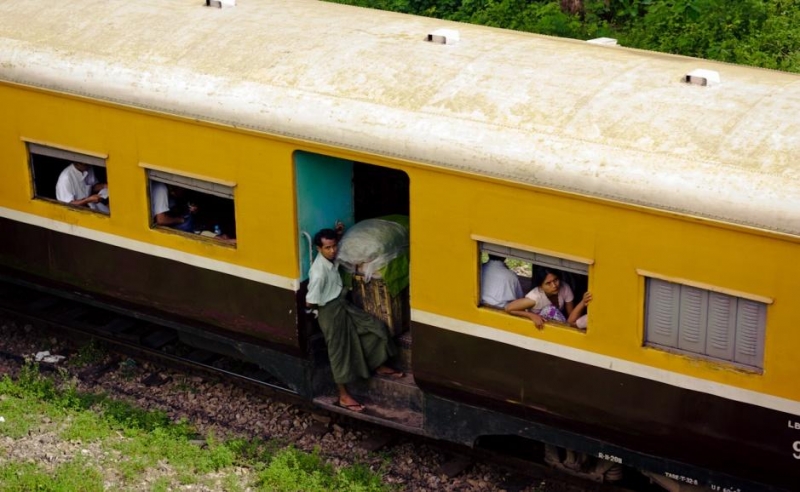
Yangon Circular Train | Image credit: Waldemar Merger
After experiencing the hustle and bustle at the local market, take the Yangon Circular Train to immerse yourself in more of the Burmese people’s daily lifestyle. Channel the Burmese commuter and hobnob with locals on the train. Make the most of the warmth and friendliness of the locals and capture the most organic photos of life in Myanmar. You’ll get amazing shots, too, especially since the locals do not mind having their photos taken.
Then, stop for lunch at Junction City which is located across the Bogyoke Market. While food courts were relatively unknown in Yangon, the last five years have seen a surge in the common eating rooms. One of the best things about food courts in Yangon is that their hygiene standard in food court is much higher than street shops. Food courts are more strictly supervised by the local food authority, and thus, food served there is much cleaner. The food courts offer the whole gamut of choices – from Asian and European cuisines, and of course, there are many Burmese food stalls in the food court as well.
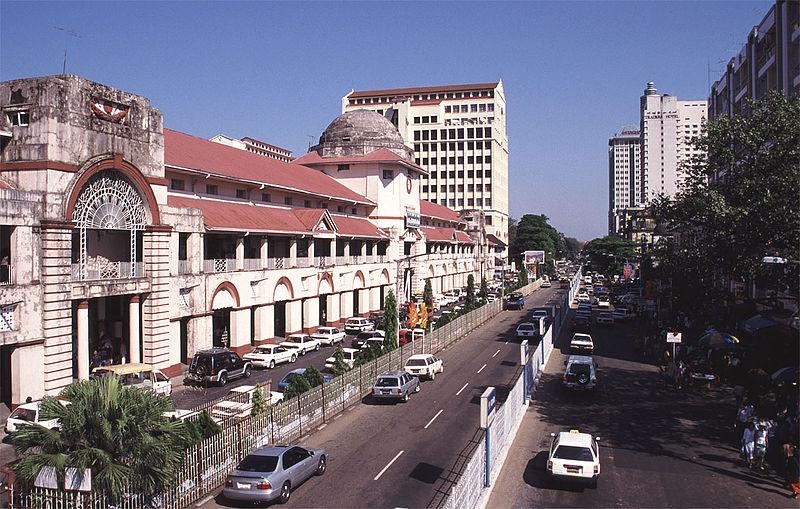
Bogyoke Market | Image credit: Stefan Fussan
After finishing your lunch, make your way to Bogyoke Market, one of the more popular tourist attractions in Yangon. There, you can buy souvenirs, such as paintings, key chains, and traditional bags. For visitors who are looking for high-end quality products, Yangoods is a popular shop that offers great products at very reasonable prices. At Bogyoke, prepare to bargain to stretch your budget. Sometimes, you can even bargain for half the price for goods, so don’t be shy to flex those negotiation skills.
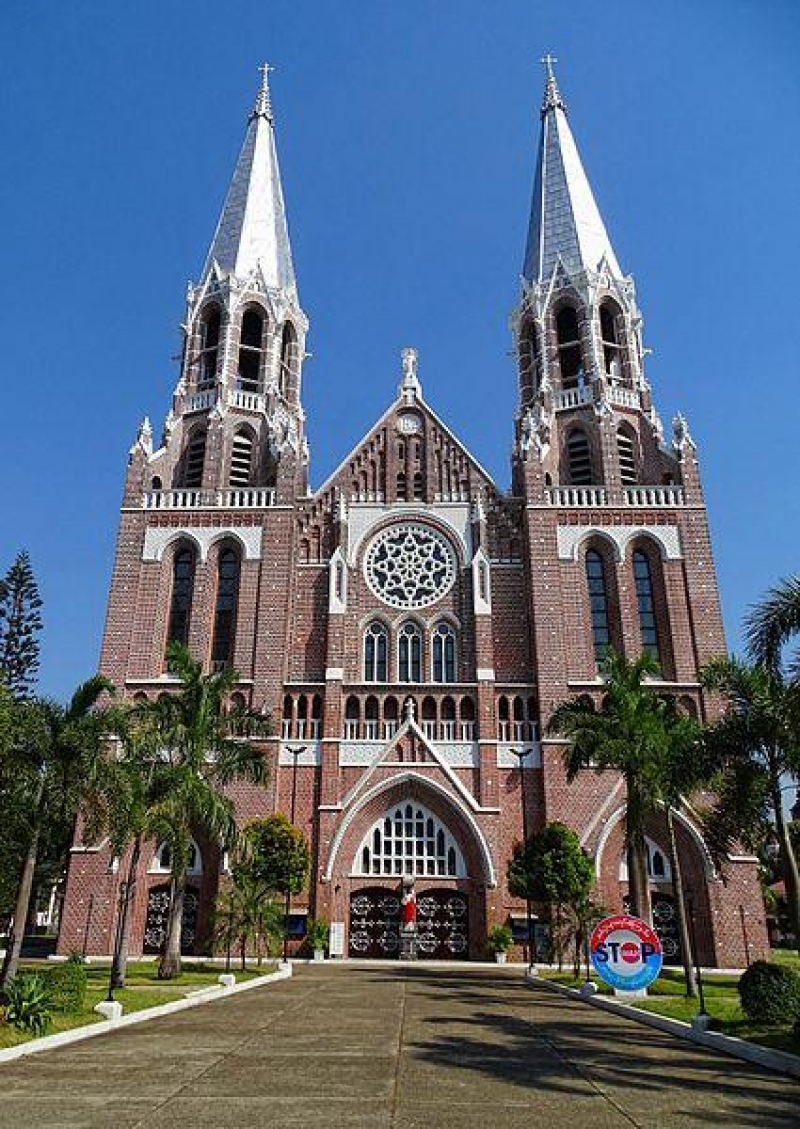
Saint Mary’s Cathedral | Image credit: Bjørn Christian Tørrissen
After getting souvenirs for your friends and family at Bogyoke market, you can head to Saint Mary’s Cathedral, the largest cathedral in Yangon, in Bo Aung Kyaw Street. The taxi cost fare from Bogyoke Market will also be just around 1000-1500 Kyats. In Buddhist predominant Myanmar, this church definitely offers a unique architectural quality and the cathedral grounds offer a tranquil place to wander about.
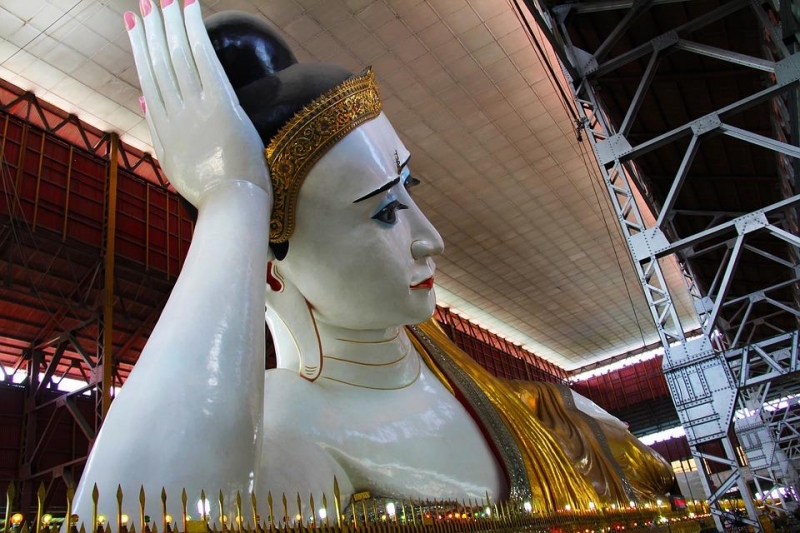
hauk Htet Kyi Pagoda | Image credit: Sharonang
Your next stop should be the Chauk Htet Kyi Pagoda. This reclining Buddha image is 65-metre long and will surely be an awe-inspiring sight. If you still have time, visit the Ngar Htet Gyi Pagoda, which is within walking distance from Chauk Htet Kyi Pagoda. This other 14-metre tall sitting Buddha image is equally as grand as Chauk Htet Kyi.
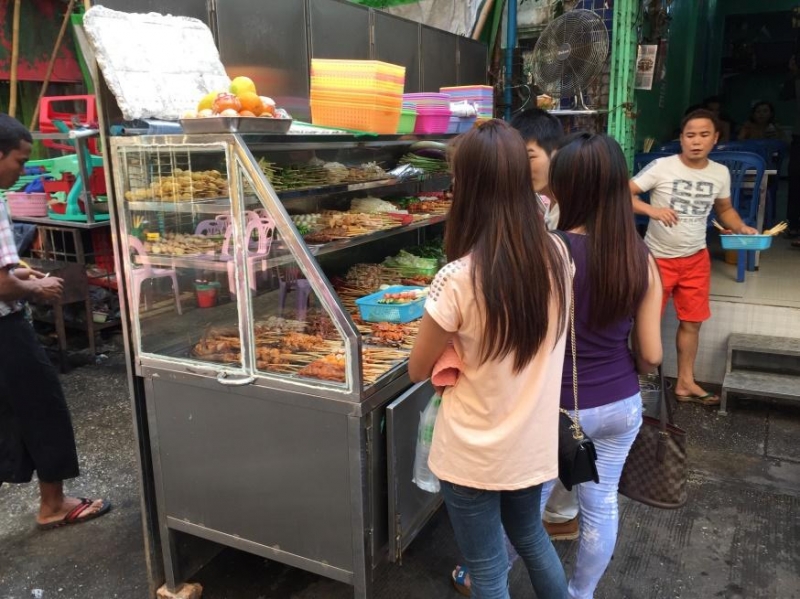
19th Street | Image credit: Journey Jeff’s Pix
After visiting cathedrals and temples, drop in at 19th Street. The street is filled with streetside joints, local beer stations, and quaint eateries. Enjoy the barbecued foods, such as BBQ chicken, pork, or vegetables, and wash it down with a local beer. Before heading back to your hotel, get a foot or body massage at the lower block of 19th street.
Day 3: Day trips outside of Yangon
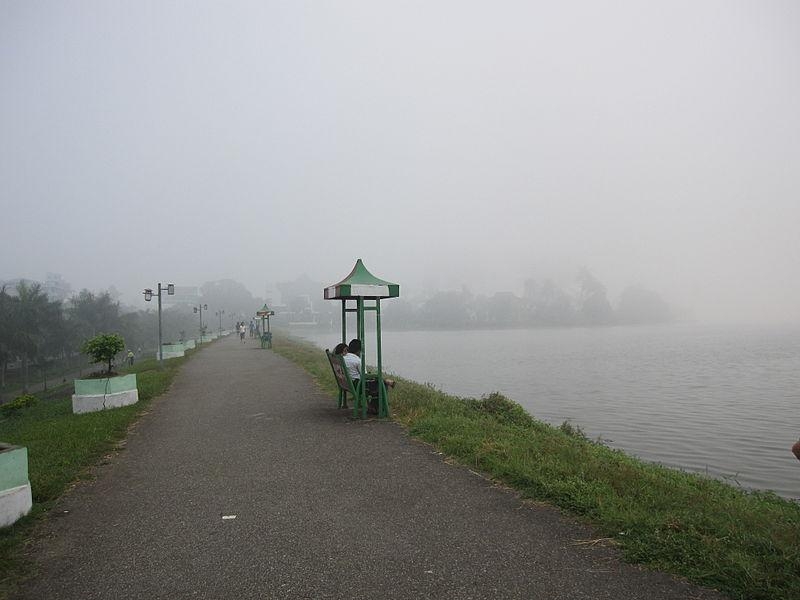
Taking a stroll along Inya Lake | Image credit: wagaung
As most part of the day will be spent on the car driving to Thanlyin, welcome the chance to stretch those muscles with a morning walk at Inya Lake. Take in the scenic views of Inya Lake as you make your way around the lake.
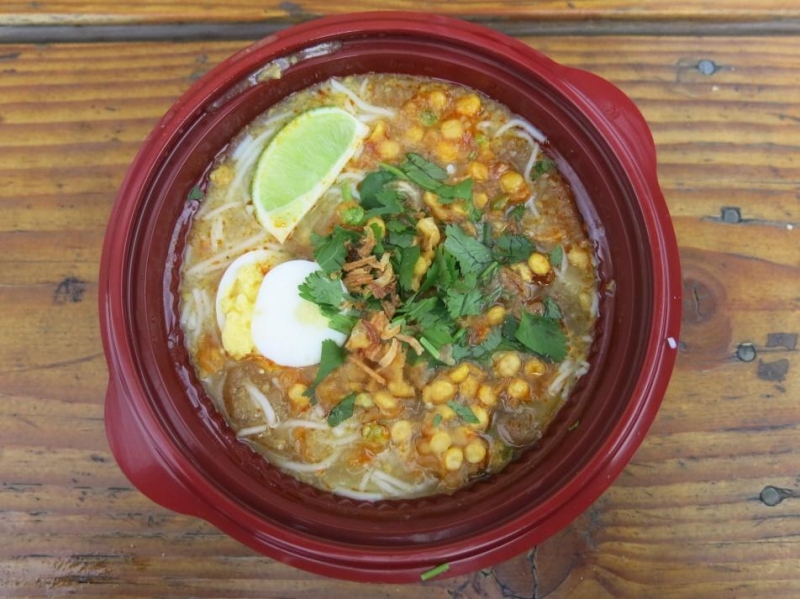
Mohinga | Image credit: Gary Stevens
After your early morning stroll, load up with some Mohinga, a local favourite breakfast. before heading off to Thanlyin. Mohinga, a fish soup usually served with rice noodle, is prepared in a hot bowl and you can enjoy it in the classiest style by adding as much fries into the soup as you would love to. Fried gourd, fried Mandalay beans, and fried dough sticks are just examples of fried food options that you can add into your bowl of hot Mohinga.
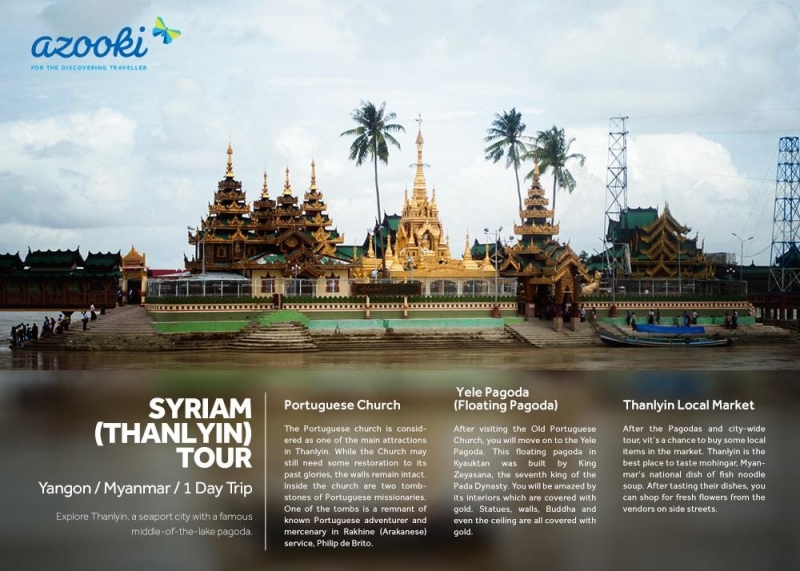
Yele Kyauktan Pagoda | Image credit: Azooki Travel
You can rent a taxi service to travel to Thanlyin for only $80. and it usually takes about two hours to get there. Once in Thanlyin, make a pit stop at Yele Kyauktan Pagoda. Perched on the river, you have to ride a boat to cross to this pagoda’s grounds.
For the lunch, you can stop at a local toddy palm juice shop to eat and drink like a local. Toddy palm juice is a popular local liquor in the outskirts of Yangon, and you can down it with some grub, like fried crunchy bean salad, or if you are an adventurous eater, you can try fried rat (or frog).
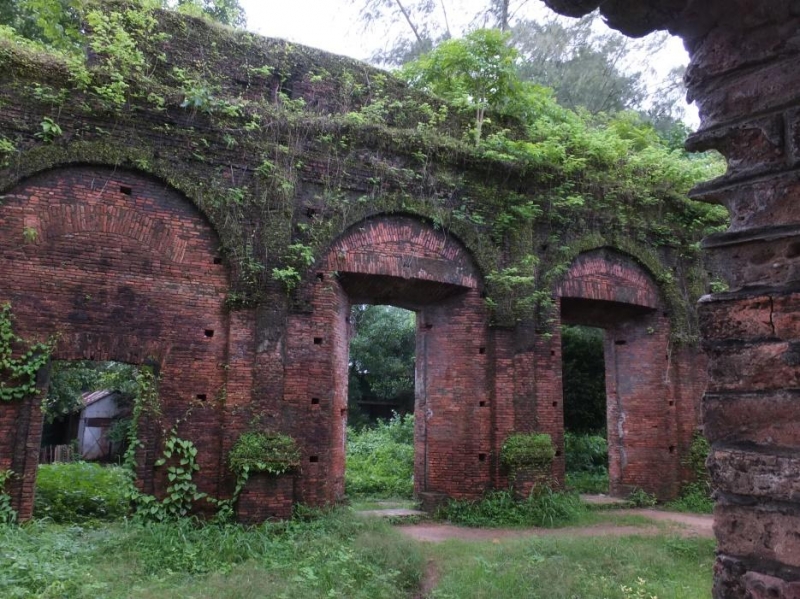
Ancient Portuguese Church | Image credit: Hideki Yoshida
Then, drop in for a visit to the ancient Portuguese Church. This place has gotten popular in the recent years, thanks to the rustic look of weathered structures and overgrown greens. Thanlyin, unlike Yangon which is ruled by British colony, was ruled by the Portuguese and this ancient ruin of Portuguese Church is the evidence that Thanlyin used to be a Portuguese-occupied territory.
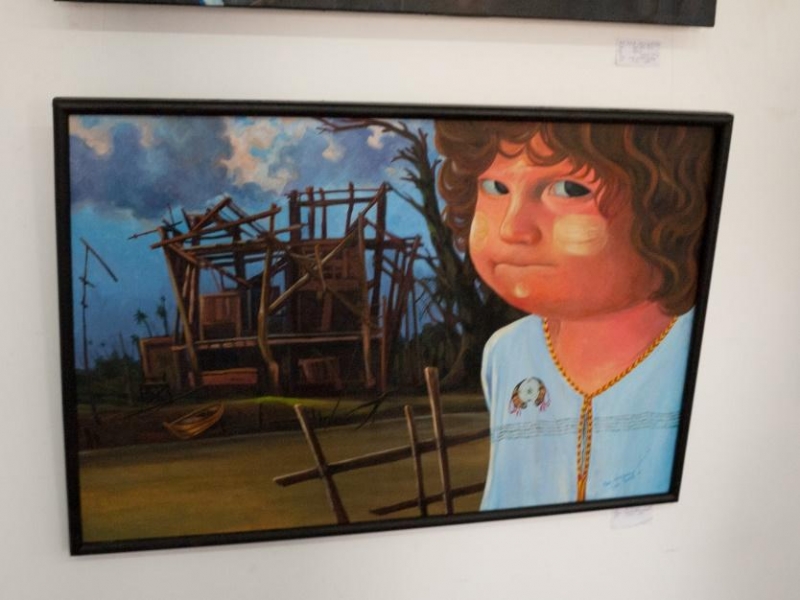
Yangon Gallery | Image credit: Nat Friedman
The trip back to downtown Yangon takes about two hours, and if you still have time, I would advise you to visit the Yangon Gallery to see some of the city’s popular works of art. Develop an appreciation for local artistry.
Yangon, compared to other cities in the country, has all the attractions needed for a full-on Myanmar experience. In fact, with all there is to do, see, and experience in Yangon, it remains largely underrated, an exotically secret travel haven, if you will. With more and more people gushing about the Myanmar experience though, we can only expect that Yangon will soon embrace visitors in packs.




